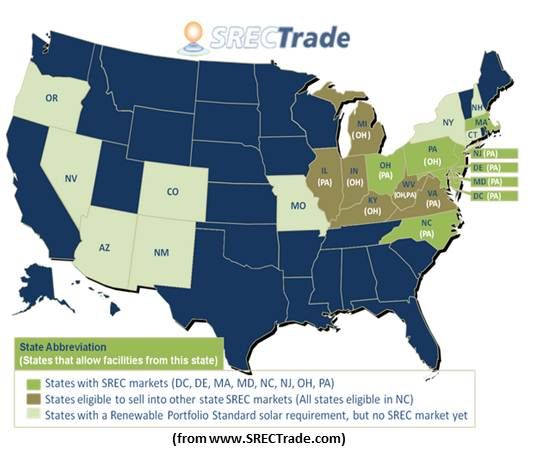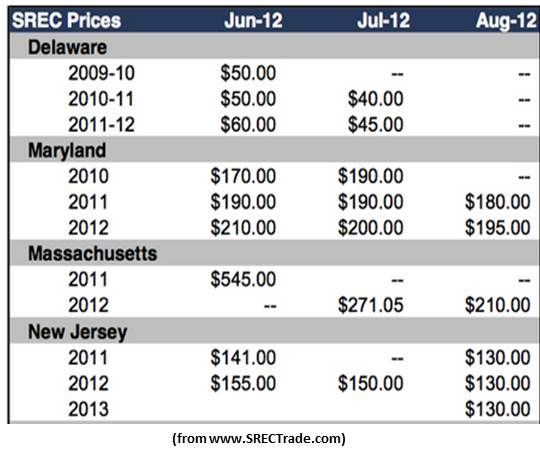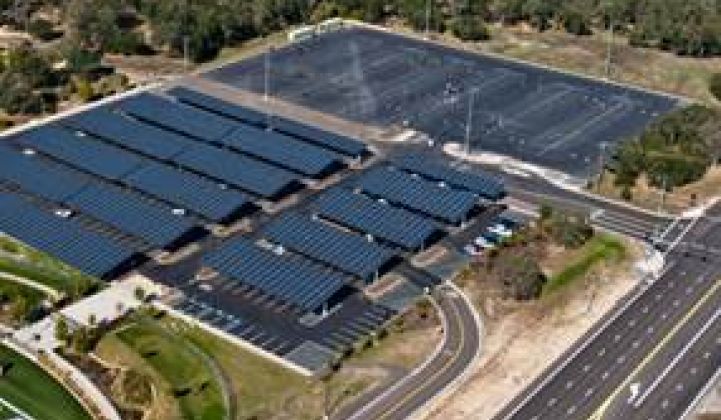Two things distinguish the just-announced $64.4 million funding from U.S. Bancorp (USB) and National Consumer Cooperative Bank (NCCB) for Borrego Solar's commercial-scale installations.
“It is one of the biggest funds ever closed in Massachusetts,” said Borrego CFO Bill Bush, “and, because Massachusetts is a Solar Renewable Energy Credit [SREC] state, it is a vote of confidence for this relatively new SREC market.” The fund will support the construction of eighteen megawatts of solar across eight sites.
NCCB will provide debt funding. U.S. Bancorp and Borrego Solar, as equity partners, will own the projects and share the 30 percent investment tax credit (ITC) and accelerated depreciation. Municipalities, a school district, and other participants will get reduced electricity prices.
In Massachusetts’ SREC market, unlike in a production-based per-kilowatt-hour rebate incentive system, Bush said, solar systems’ kilowatt-hours earn SRECs which are auctioned to utilities and others in need of satisfying renewables, solar and emissions mandates.
NCCB’s participation, Bush said, “relies primarily on the sale of these certificates and demonstrates,” he explained, that “a bank took a look at the market and said they believe in it and they believe the projects will be able to generate adequate cash flow to pay back what they underwrote.”

Borrego Solar, in residential rooftop solar since 1980, began undertaking third-party-financed commercial-scale projects of up to ten megawatts in 2009 when the firm realized, Bush said, “the commercial-scale power purchase agreement (PPA) was significantly more financeable and opened up avenues of financing” with solar customers “that didn’t have the capital or didn’t want to deploy capital in that way.”
Borrego has now done third-party-funded solar projects worth $225 million. U.S. Bancorp, not the first bank that the firm approached, Bush said, “was the bank which seemed to be the best partner for us” and has developed, he said, “respect for PPAs as a reasonable method of financing.”
Bush led Borrego’s first PPA financing, three megawatts across nine different sites for the San Diego Community College District. “It was a partnership-flip structure,” he explained. “You create a Special Purpose Entity with two partners in the ownership of the solar system. That entity contracts with the host, in that case San Diego Community College, to sell the electricity through a service contract called a PPA."
Borrego and U.S. Bank owned the solar. “Because of MACRS [Modified Accelerated Cost Recovery System], often referred to as accelerated depreciation,” Bush said, "the financial partner, in this case U.S. Bank, was able to depreciate the cost over the first five years of operation.”
In those five years, he went on, even if there are gains from selling electricity, depreciation creates losses. “If you have gains in another part of your business, they are offset. That is how banks monetize the solar systems. That’s why they invest in these structures.”
When the bank exited the partnership, Bush said, Borrego continued to benefit from the solar system’s revenue stream. “A solar system is going to work for 25 years, minimum,” he said.


Having an investment-grade credit rating of triple B or better is one way that municipalities can make institutional investors comfortable with a solar PPA, Bush said. Borrego’s eight 2011 deals, he said, came with A or better ratings.
In the first meeting with the bank, Bush said, “You describe to them your track record.” Credentials like the Borrego team’s ten-plus years in solar and five-plus years of stability matter to investors.
The balance sheet comes next. “They are going to look at your ability to backstop the system, should something go wrong. The strength of your balance sheet determines your ability to recover.”
Finally, Bush explained, “Deals are expensive, and there are opportunity costs. The bank wants to know what the company’s ability to do another job is.” If a solar company can’t follow up, Bush said, the bank incurs the cost of finding a new partner.
“If you can check those three boxes -- team, pipeline, and balance sheet -- you make an attractive partner," he said. And, he added, “you never want just one partner. Certain types of projects appeal to certain types of investors. If you only have one partner, you can only develop one type of project.”
Currently, municipalities and public agencies are considering another funding source. “Interest rates being as low as they are, bonds are becoming much more popular,” Bush said. “We’ve done several projects that were financed via voter-approved bonds.”
But, he said, some public entities still simply want “contracts to buy electricity at a discounted rate. They acknowledge they could float a bond. But if Borrego finances the system, the cost doesn’t affect their balance sheet.” Or, he noted, “They might have just passed a bond issue and don’t want to go back to the voters.”
Both PPAs and bonds are acceptable methods of solar finance, Bush said. “Ultimately, it comes down to what the cost of capital is. In certain cases, it is more lucrative to go to the voters with a bond issue, and in other cases it might not be.”
No capital investment is really necessary, Bush said. “The asset municipalities and agencies have is purchasing power. They can monetize that purchasing power. Through entering an agreement with us, they get cheaper power, and it is a way for them to make money on the first day.”



